7 TRE® Exercises: A Guide to Tension & Trauma Release Exercises
Learn the 7 core TRE exercises developed by Dr. Berceli to release stress and trauma naturally. Step-by-step guide with muscle fatigue techniques for nervous system healing and tension relief.
5/27/20256 min read
What is TRE® (Tension & Trauma Release Exercises)?
TRE® is a self-help program created by Dr. David Berceli, specifically designed to release stress and deep muscle tension through a series of exercises that activate the body's natural shaking reflex. This innovative approach helps your nervous system discharge accumulated tension and trauma by systematically fatiguing specific muscle groups, allowing your body's innate healing mechanisms to restore balance and wellbeing.
Benefits of Regular TRE® Practice
Regular TRE® practice can help you experience:
Natural stress and anxiety reduction through nervous system regulation
Release of chronic muscle tension and physical holding patterns
Improved sleep quality and deeper relaxation
Enhanced emotional resilience and stability
Recovery support for physical and emotional trauma
Increased body awareness and self-regulation skills
Greater overall sense of calm and wellbeing
Essential Safety Instructions
Who Can Practice TRE® Safely: Most people can safely use TRE® alone for general stress relief and muscle relaxation. The exercises are designed to be gentle and self-regulating when practiced correctly.
When to Seek Professional Guidance:
For trauma symptom relief: Consult a certified TRE® provider for personalized guidance
For severe trauma symptoms: Work under direct supervision of a provider with specialized trauma expertise
If you experience overwhelming emotions: Stop practice and seek professional support
Important Safety Guidelines:
Pregnant individuals should avoid TRE® practice (especially after first trimester)
Those with recent surgeries or serious injuries should consult healthcare providers first
People taking muscle relaxants or psychiatric medications should seek medical clearance
Key Practice Principles
The 7/10 Fatigue Rule: Stop each exercise when muscle fatigue reaches a score of 7 on a scale of 0-10, where 7 represents moderate fatigue but not excessive strain. This sweet spot allows for effective muscle activation without overexertion.
Between Exercise Protocol: Gently shake out (relax) your limbs as recommended between exercises to encourage natural movement and release.
Listen to Your Body: Trust your body's signals and adjust intensity accordingly. The goal is therapeutic fatigue, not pain or exhaustion.
Exercise 1
Foot & Ankle Sway
Target: Lower legs, ankle stabilizers
Stand tall, feet shoulder-width apart.
Slowly sway your body to the right—roll onto the outside edge of your right foot and the inside edge of your left foot.
Hold 15 seconds.
Gently sway to the opposite side and hold again.
Repeat 5 times each way.
💡 Tip: Keep movements slow and controlled. You should feel a mild stretch and activation in the ankle muscles.


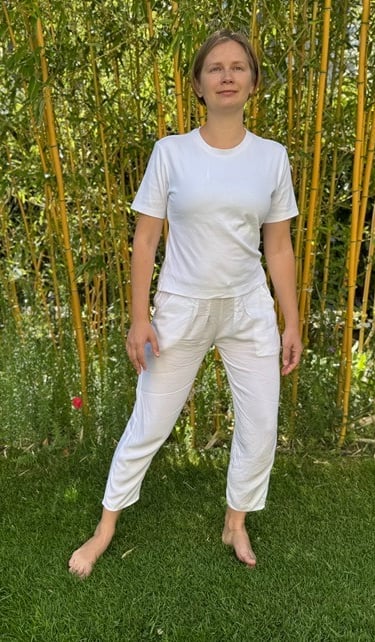

Exercise 2
Heel Lifts
Target: Calf muscles
Put the weight of your body on one leg.
Place your other leg on its toes behind you, just to maintain balance.
Keep your knees slightly bent.
With your standing leg, lift your heel as high as you can, then lower it. You can hold for several breaths in the upper position.
Repeat 10–15 times.
Shake out the leg, then switch sides.
💡 Tip: If it's difficult to maintain balance, you can hold onto a chair or wall to make it easier.
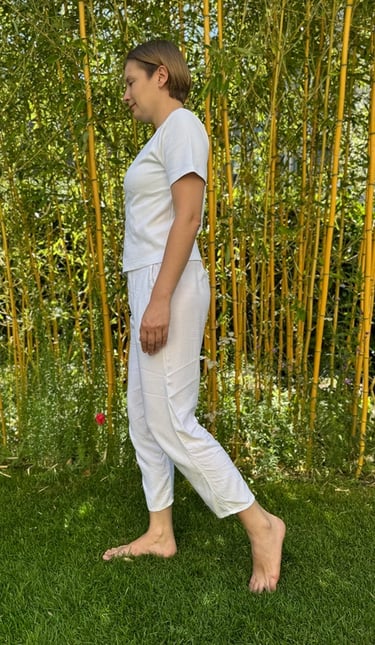

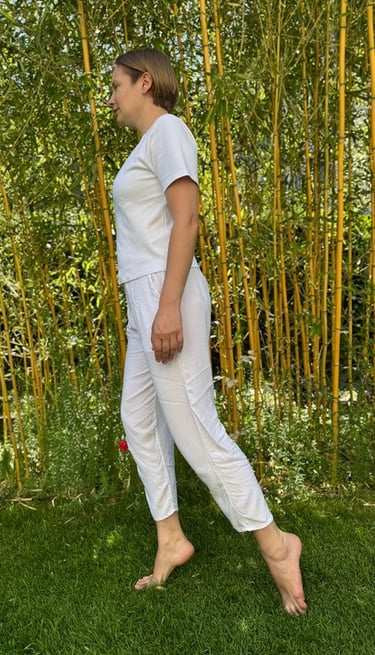

Exercise 3
Forward Bend Leg Press
Target: Quads, hamstrings, glutes
1. Bend forward and place your hands on the floor. Lift one leg behind you, keeping both knees slightly bent.
2. Bend the knee of your standing leg more deeply, lowering your hips down, then press back up.
3. Keep your hips level and prevent the lifted leg from dropping down. Repeat 10–15 times, then switch sides. Shake out your legs after completing both sides.
💡 Tip: If it's difficult to reach the floor with your hands, place them on a bed or chair instead. Keep your knee over your ankle—never push it forward beyond your toes.
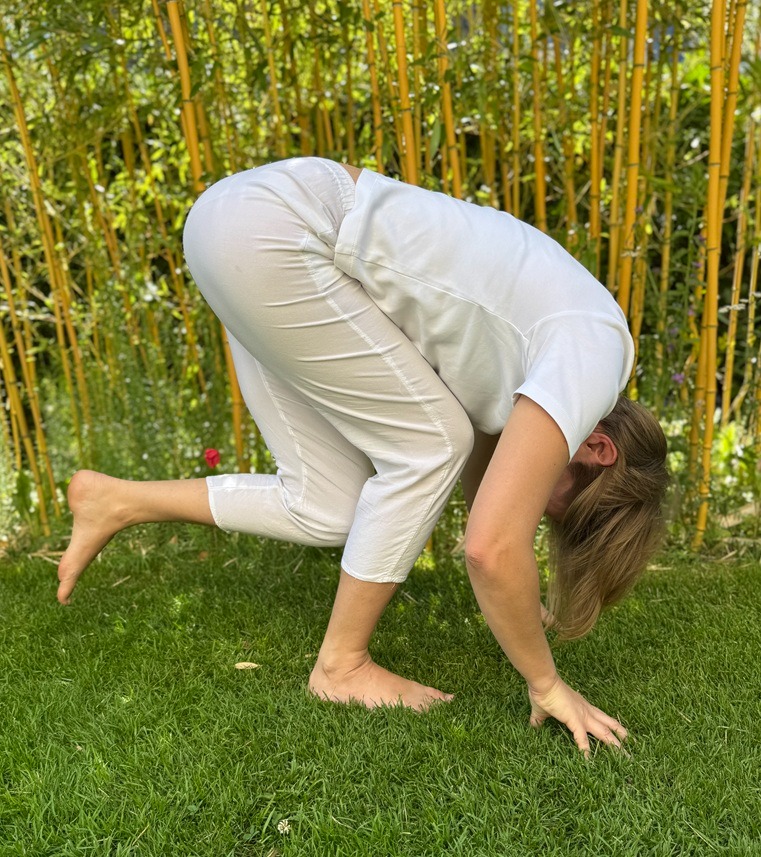

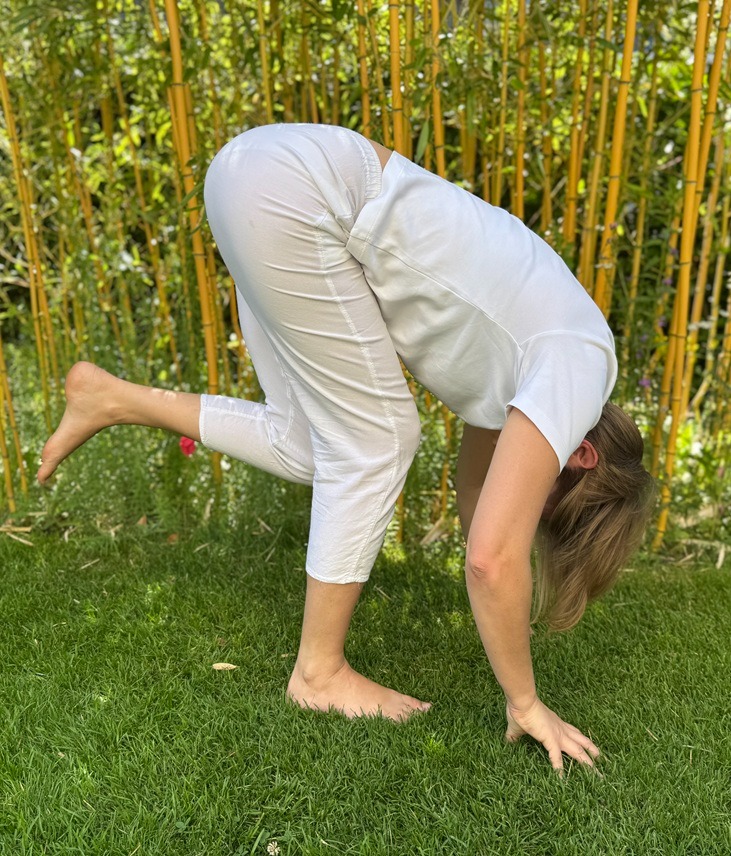

Exercise 4
Wide-Leg Forward Bend
Target: Inner thighs, hamstrings, lower back
Stand with legs wide.
Bend knees slightly, hinge forward.
Hands reach to the floor—hold for 3 breaths.
Walk hands to your right foot—3 breaths.
Walk to left foot—3 breaths.
Return to center, reach between legs—3 breaths.
Rise slowly to standing.
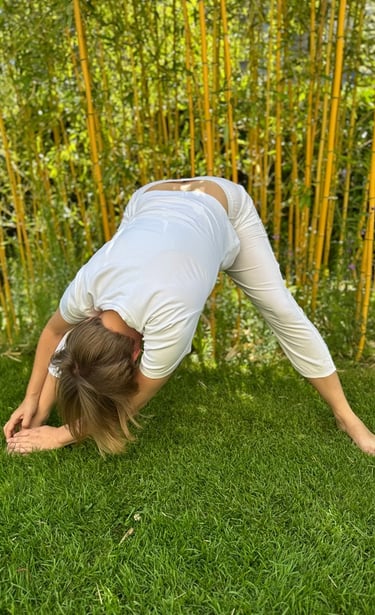

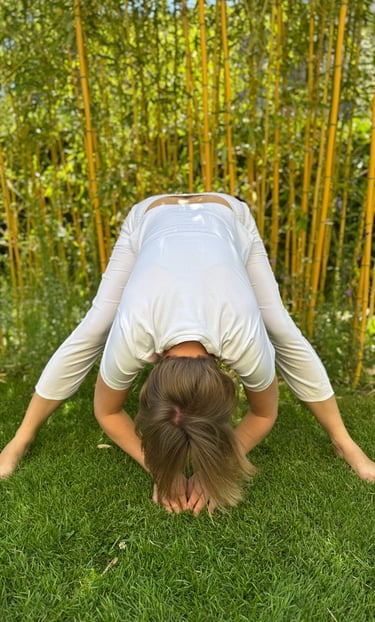


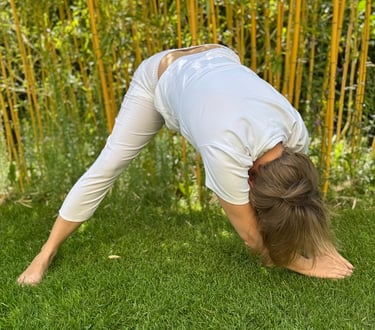
Exercise 5
Front Body Stretch
Target: Hip flexors, spine, front thighs
Stand tall, hands on your lower back or hips.
Push hips forward gently, creating a small arch in your lower back. Hold 3 breaths.
Twist your torso to the left—3 breaths.
Twist right—3 breaths.
Center again—3 breaths.
💡 Tip: Keep your head straight and feet parallel to each other.
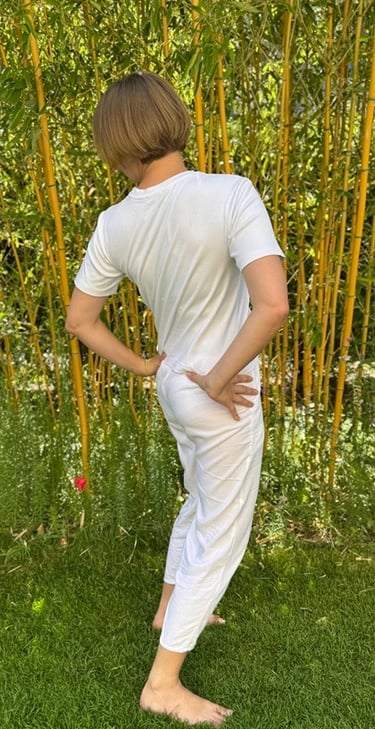

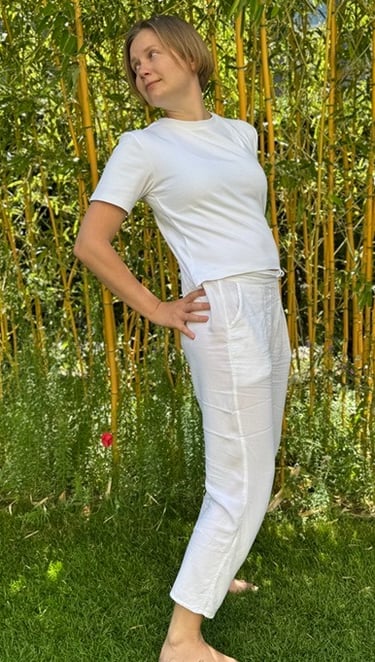



Exercise 6
Wall Sit
Target: Quadriceps, inner thigh, glutes
Lean against the wall with your back flat and shoulders relaxed.
Position feet slightly away from the wall so you can see your toes.
Slide down until you feel 5/10 tension (moderate, not difficult).
Hold until fatigue reaches 7/10, then move up 2-3 cm to return to 5/10.
Repeat this 5/10 to 7/10 cycle for 3-5 minutes.
Stand up and shake out your legs.
💡 Tip: Body tremors may begin during this exercise - this is completely normal and therapeutic. If shaking becomes uncomfortable, simply stand up and rest.
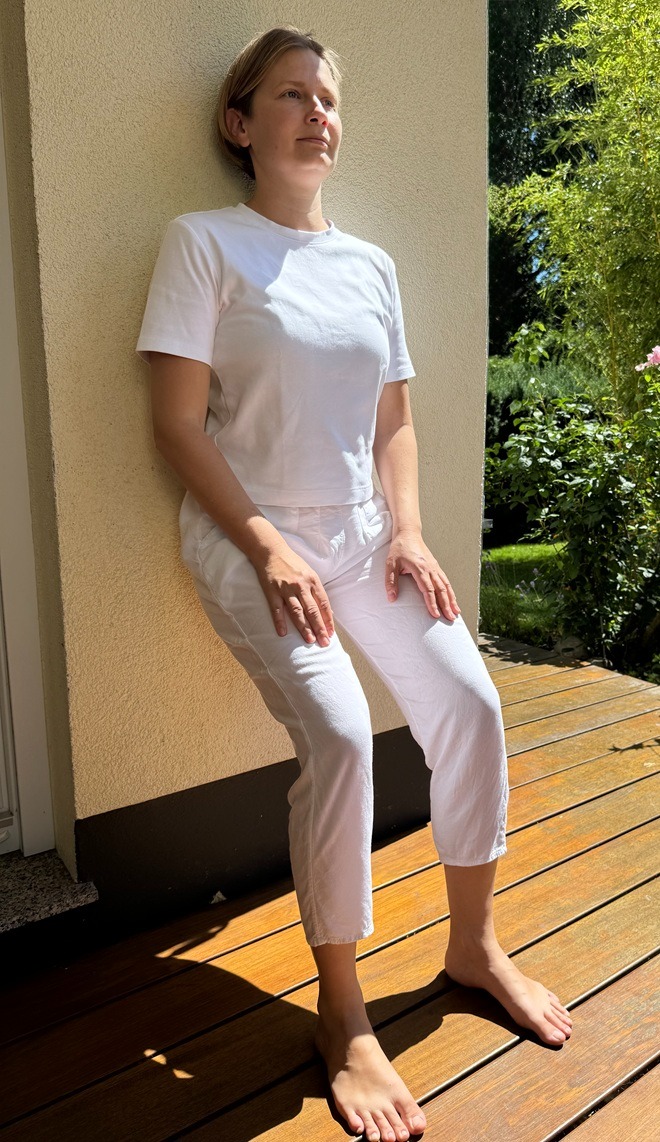

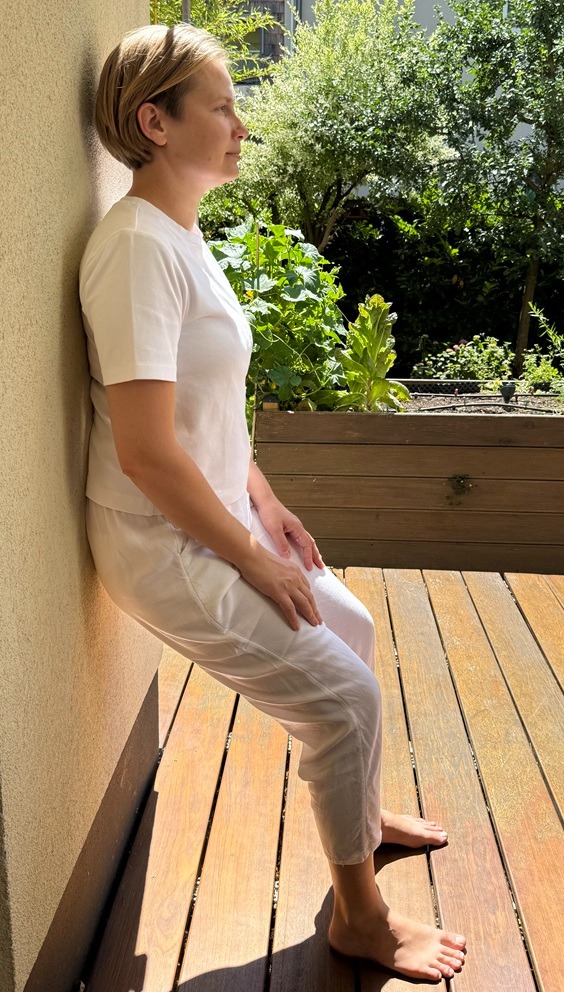

Exercise 7
Hips Lift
Target: Psoas, pelvic floor, deep core
Lie on your back with knees bent and feet together or comfortably apart.
Let your knees naturally fall open in a relaxed position.
Lift your hips about 2 inches (3–5 cm) off the floor and hold for about 1 minute.
Relax your hips back down to the floor. Rest for 1 minute with knees apart. Keep your feet together
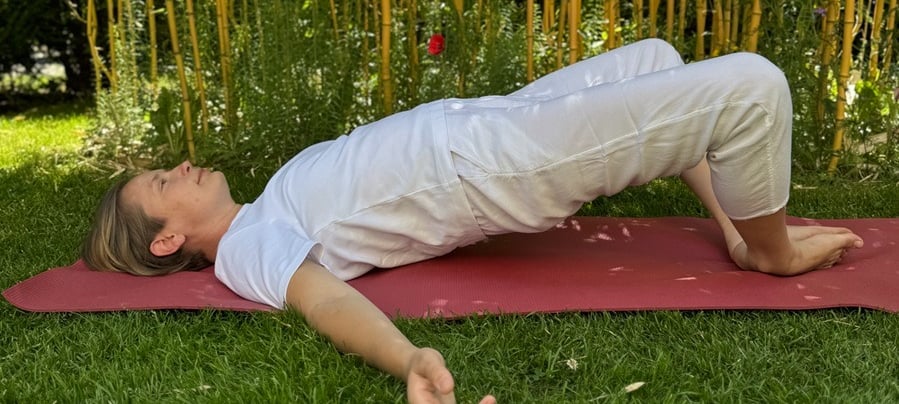


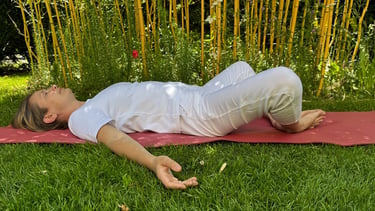
Starting tremor
Lie on the floor with feet together, positioned 30-40 cm away from your pelvis.
Slowly move your knees closer together by 2-3 cm, then stop.
Take several breaths in this position, observing sensations in your inner thighs.
When comfortable, move knees another 2-3 cm closer together.
Repeat this process several times until knees are nearly parallel.
When tremors begin, place both feet flat on the floor for stability.
To stop tremors, stretch your legs straight and rest.
💡 Tip: Focus on awareness of what's happening in your body. Move slowly and breathe throughout the process. You can take a break, relax, and start again from exercise seven or go straight to the tremor position.

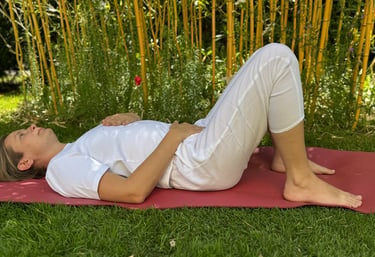
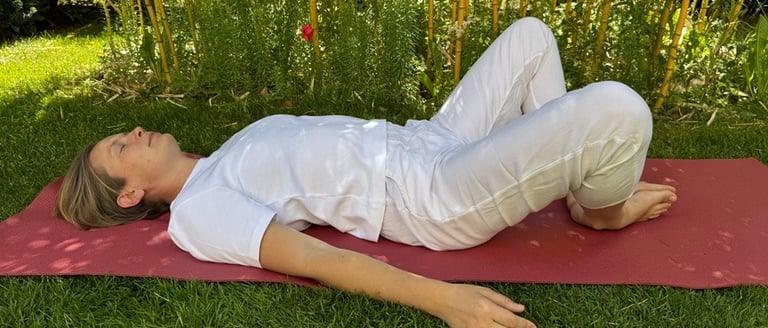

Post-Exercise Integration and Self-Care
After completing your TRE® practice, allow time for proper integration:
Immediate Aftercare:
Rest quietly for 5-10 minutes in a comfortable position
Stay hydrated by drinking water
Notice and acknowledge any changes in how your body feels
Avoid stimulating activities for at least 30 minutes after practice
Ongoing Self-Care Practices:
Practice TRE® 2-3 times per week initially, adjusting frequency based on your body's response
Keep a practice journal to track your experiences and progress
Be patient with the process - therapeutic benefits accumulate over time
Honor your body's needs and adjust intensity accordingly
When to Seek Professional TRE® Support
Consider working with a certified TRE® provider if you:
Have a significant trauma history or complex PTSD
Experience overwhelming emotions or flashbacks during practice
Have chronic pain conditions or complex health issues
Feel unable to access the natural tremoring response
Want personalized guidance for your specific needs
Need support integrating TRE® with other therapeutic approaches
The 7 core TRE® exercises provide a complete, scientifically-based approach to releasing stress and trauma through natural body mechanisms. By following the systematic muscle fatigue protocol and respecting the 7/10 fatigue guideline, you can safely access your body's innate healing capacity.
Remember that TRE® is a gentle, self-regulating process. Trust your body's wisdom, practice consistently but not excessively, and allow the natural tremoring response to guide your healing journey. With regular practice, TRE® Therapy can become an invaluable tool for maintaining nervous system health and overall well-being.
The beauty of TRE® lies in its simplicity and accessibility - your body already knows how to heal; these exercises simply provide the conditions for that natural process to unfold.
Connect
Follow
E-mail:
Phone (WhatsApp)
© 2025. All rights reserved.
Useful links

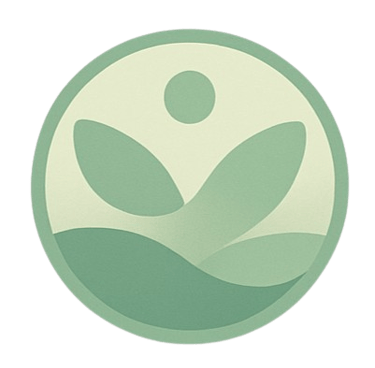
TRE® is a registered trademark with all intellectual rights belonging to TRE® for All, Inc.
TRE® has not been evaluated by the US Food & Drug Administration or the American Medical Association.
This technology is not intended to diagnose, treat, cure, or prevent any disease. Medical advice must only be obtained from a physician or qualified health practitioner.
Results may vary between individuals. There are no guarantees, expressed, or implied.
